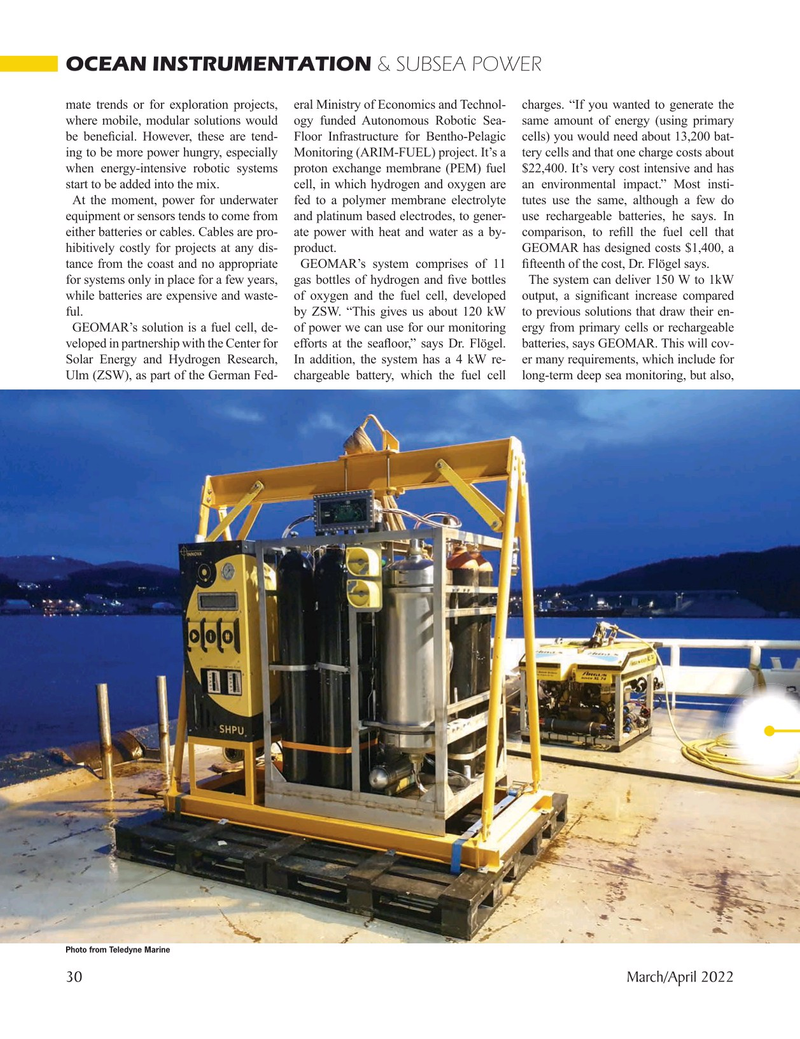
Page 30: of Marine Technology Magazine (March 2022)
Read this page in Pdf, Flash or Html5 edition of March 2022 Marine Technology Magazine
OCEAN INSTRUMENTATION & SUBSEA POWER mate trends or for exploration projects, eral Ministry of Economics and Technol- charges. “If you wanted to generate the where mobile, modular solutions would ogy funded Autonomous Robotic Sea- same amount of energy (using primary be bene? cial. However, these are tend- Floor Infrastructure for Bentho-Pelagic cells) you would need about 13,200 bat- ing to be more power hungry, especially Monitoring (ARIM-FUEL) project. It’s a tery cells and that one charge costs about when energy-intensive robotic systems proton exchange membrane (PEM) fuel $22,400. It’s very cost intensive and has start to be added into the mix. cell, in which hydrogen and oxygen are an environmental impact.” Most insti-
At the moment, power for underwater fed to a polymer membrane electrolyte tutes use the same, although a few do equipment or sensors tends to come from and platinum based electrodes, to gener- use rechargeable batteries, he says. In either batteries or cables. Cables are pro- ate power with heat and water as a by- comparison, to re? ll the fuel cell that hibitively costly for projects at any dis- product. GEOMAR has designed costs $1,400, a tance from the coast and no appropriate GEOMAR’s system comprises of 11 ? fteenth of the cost, Dr. Flögel says. for systems only in place for a few years, gas bottles of hydrogen and ? ve bottles The system can deliver 150 W to 1kW while batteries are expensive and waste- of oxygen and the fuel cell, developed output, a signi? cant increase compared ful. by ZSW. “This gives us about 120 kW to previous solutions that draw their en-
GEOMAR’s solution is a fuel cell, de- of power we can use for our monitoring ergy from primary cells or rechargeable veloped in partnership with the Center for efforts at the sea? oor,” says Dr. Flögel. batteries, says GEOMAR. This will cov-
Solar Energy and Hydrogen Research, In addition, the system has a 4 kW re- er many requirements, which include for
Ulm (ZSW), as part of the German Fed- chargeable battery, which the fuel cell long-term deep sea monitoring, but also,
Photo from Teledyne Marine 30 March/April 2022
MTR #3 (18-33).indd 30 2/25/2022 9:59:50 AM

 29
29

 31
31
